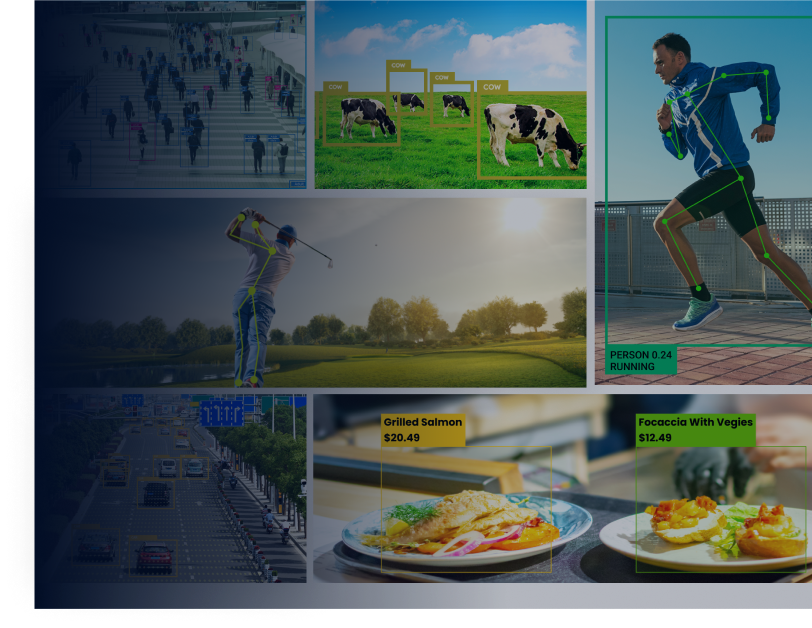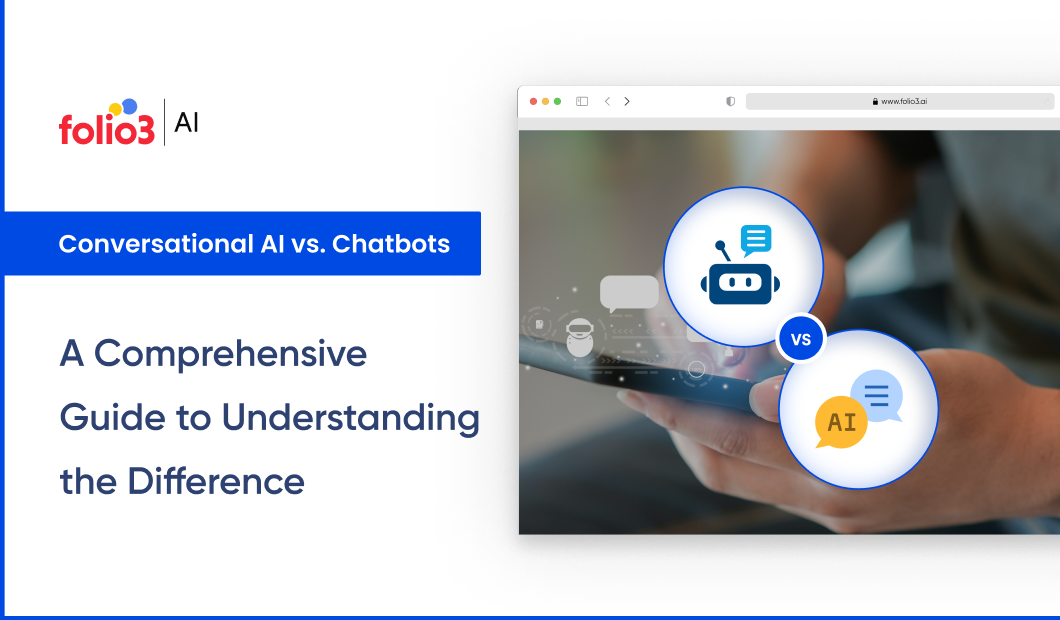Introduction:
The rise of automation and artificial intelligence (AI) has revolutionized the manner corporations and individuals communicate. Among the most prominent innovations are Conversational AI and chatbots. Though these technologies are grouped collectively, they are wonderful in both their functionality and application.
This blog aims to offer a complete guide to expertise in Conversational AI and chatbots, discover their variations, and help companies decide which solution is suitable for their needs. We will dive into the underlying technology, realistic examples, and the future ability of these systems.
Here’s a table highlighting the differences between Conversational AI and Chatbots:
| Feature | Conversational AI | Chatbots |
| Definition | Advanced AI systems capable of understanding context, intent, and providing natural interactions. | Rule-based systems designed for pre-defined tasks or simple queries. |
| Technology Used | Utilizes Natural Language Processing (NLP), Machine Learning (ML), and contextual understanding. | Relies on keyword matching, decision trees, and scripted responses. |
| Contextual Awareness | Understands context and maintains conversational flow across multiple turns. | Lacks contextual awareness; operates on a query-response basis. |
| Adaptability | Learns and improves over time using user data and interactions. | Static and requires manual updates for improvements. |
| Use Cases | Customer support, virtual assistants, voice-enabled devices, and complex problem-solving. | Basic FAQs, lead generation, and simple query resolution. |
| Language Understanding | Can understand and process natural language, slang, and nuances. | Limited to pre-set keywords and phrases. |
| Multimodal Support | Supports voice, text, images, and more. | Primarily text-based interaction. |
| Integration | Integrates with various systems like CRMs, ERPs, and IoT devices. | Limited integration capabilities. |
| Cost | Higher initial cost due to complexity but scalable and efficient in the long run. | Lower initial cost but less efficient for complex tasks. |
| Examples | Siri, Alexa, Google Assistant, sophisticated enterprise AI. | Website FAQ bots, scripted Facebook Messenger bots. |
What is Conversational AI?
Conversational AI refers to a complicated set of technology that enables machines to speak with people in a natural, intuitive way. Unlike conventional chatbots, which are usually rule-based totally, Conversational AI systems are powered by system getting to know (ML), natural language processing (NLP), and speech reputation technologies, letting them understand, research from, and interact in dynamic conversations.
In essence, Conversational AI can simulate human-like interactions, adapt over time, and cope with complicated queries in real-time. It’s used to automate tasks, offer personalized help, and improve overall client experience throughout diverse channels.
Key Technologies Behind Conversational AI
The key technology that Conversational AI encompasses:
- Natural Language Processing (NLP): NLP lets AI apprehend and interpret human language. It entails breaking down sentences into elements of speech, figuring out rationale, extracting entities, and understanding context.
- Machine Learning (ML): ML permits the machine to analyze giant quantities of conversational facts, enhancing its accuracy and responsiveness through the years. The greater the facts of its methods, the higher it turns into predicting consumer queries and presenting applicable responses.
- Speech Recognition: This technology permits Conversational AI systems to manner voice inputs, convert speech to text, and have interaction in voice-based conversations. Examples encompass voice assistants like Alexa and Google Assistant.
- Dialog Management: It guarantees that responses are coherent and contextually applicable, retaining the communique on the right track.
- Sentiment Analysis: Sentiment analysis permits Conversational AI to locate the emotional tone of a consumer’s message—whether it’s nice, terrible, or impartial—allowing extra empathetic and personalized responses.
What is an Example of Conversational AI?
Some of the maximum famous examples of Conversational AI encompass:
- Amazon Alexa: Alexa is a voice-activated digital assistant that can carry out a huge variety of responsibilities, from controlling smart home devices to offering weather updates. It uses NLP and device studying to interpret personal commands and improve over the years.
- Google Assistant: This AI-powered assistant can process voice queries and have interact in dynamic conversations. It is integrated into smartphones, clever audio systems, and other gadgets, supplying contextual and conversational responses to customers.
- Apple Siri: Siri is a voice-activated assistant that uses gadget learning to enhance its accuracy. Over time, Siri learns consumer choices and behaviors to provide more personalized responses.
- Mitsuku: A chatbot powered via Conversational AI, Mitsuku has won the Loebner Prize Turing Test in more than one instance. It can have interaction in real-time, intelligent conversations with customers, and coping with complicated queries and subjects.
How Conversational AI Works
The middle of Conversational AI lies in its capacity to imitate human conversation. It follows a systematic approach to processing and responding to enter:
- Input Understanding: The system first analyzes the consumer’s message using NLP to extract meaning and context. It breaks down the sentence, identifies key terms, and discerns the consumer’s purpose.
- Context Handling: Conversational AI systems preserve context at some point of change. Unlike easy chatbots, they do not forget past interactions within a session and can offer responses that align with preceding messages, growing a fluid verbal exchange.
- Response Generation: Once the intent and context are understood, the system generates an appropriate response. This might involve pulling from a knowledge base, making API calls, or crafting a custom answer based on the user’s query.
- Continuous Learning: Conversational AI models improve over time through machine learning. By analyzing interactions, they continuously refine their understanding and responses, adapting to new queries and user preferences.
What is a chatbot?
A chatbot is a software application designed to simulate conversations with human users. Chatbots interact with users through text or voice and are often used to answer questions, recommend products, assist with basic customer service inquiries, or handle simple tasks
Chatbots can be rule-based or AI-powered:
- Rule-based chatbots: These work on predefined rules. A decision tree model is followed in which responses are triggered based on specific keywords or commands. While effective for simple queries, they lack the ability to handle complex or unexpected interactions.
- Chatbots powered by AI: These use machine learning and NLP to understand and answer a wide range of questions. AI chatbots are flexible and can provide more natural and contextual answers than rules-based chatbots.
Different types of chatbots
Chatbots come in different forms, and their use depends on the complexity of the task:
- Simple chatbots: These bots follow scripts and provide customized responses. They are suitable for basic tasks such as answering a question or guiding users in a particular direction.
- Hybrid chatbots: By combining rules-based and AI-powered features, these bots can handle pre-defined tasks and more dynamic conversations. It is commonly used in customer care settings, where they support human representatives by handling routine inquiries.
- AI Chatbots: These are fully autonomous bots capable of engaging in meaningful, contextual conversations. They are able to handle difficult interactions and learn from past conversations to improve future responses.
Examples of chatbots
Examples of popular chatbots include:
- Drift: A chatbot that provides real-time customer support and drives visitors to websites. Drift uses AI to qualify leads, book meetings, and provide immediate feedback.
- Zendesk Answer Bot: This AI-powered chatbot helps answer customer questions by providing relevant information from the knowledge base. It helps reduce the burden of human factors.
- Communication: A messaging system with a chatbot capable of providing customer support, answering questions and answers to questions, and guiding users through various tasks.
- Facebook Messenger Bots: Many businesses use Facebook Messenger bots to communicate directly with customers through the platform. These bots can handle orders, provide updates, and offer personalized recommendations.
How to Build a Conversational AI Bot
There are several steps to create a Conversational AI bot:
- Define purpose and scope: Define the tasks the bot will perform. Will it be customer service, personal assistance, or something else? Clearly define its goals.
- Choose the right platform: Choose an AI platform like Google Dialogflow, Microsoft Bot Framework, or IBM Watson to build your bot. These platforms offer powerful NLP and machine-learning capabilities.
- Building Natural Language Understanding (NLU): Build NLU capabilities that enable your bot to understand the meaning behind user input, including terminology and various contexts.
- Enhancing the communication process: Develop a communication process for smooth, contextual exchanges. It should include fallback mechanisms in case the AI does not understand the user’s query.
- Train the bot: Give your bot big data that populates real-world conversations to help it learn to interact with it naturally. Use machine learning algorithms to improve bots.
Benefits of conversational AI and chatbots
Benefits of conversational AI:
- Improved customer experience: Provides more human-like, intelligent interactions.
- 24/7 Availability: Available at all times, providing excellent accessibility.
- Scalability: It can handle an unlimited number of connections simultaneously.
- Cost savings: Reduces the need for human agents for frequently asked questions.
Benefits of Chatbots:
- Quick Response: Ideal for quickly handling common, simple tasks.
- Increased productivity: Frees up human representatives to tackle complex questions.
- Low cost: Especially for small businesses that need basic automation.
Conclusion
In precise, even as both Conversational AI and chatbots serve precious roles in modern-day communication, they fluctuate drastically in their talents, complexity, and programs.
Conversational AI affords an extra superior, dynamic solution for companies trying to enhance client interactions, at the same time as chatbots remain a cost-effective choice for simple, rule-based tasks.
By experiencing the strengths and obstacles of every, organizations can select the proper answer to satisfy their particular needs, whether that involves implementing a complicated digital assistant or automating basic customer service strategies.
FAQS
Yes, chatbots can evolve into conversational AI systems by integrating machine learning and NLP technologies. This transition allows for more complex, dynamic interactions.
Conversational AI systems typically require more resources to build and maintain, making them more expensive than simple chatbots. However, they offer greater value in terms of automation, customer experience, and long-term efficiency.
Security is paramount in Conversational AI. Proper encryption and data protection protocols must be in place to ensure the privacy and security of user data.










